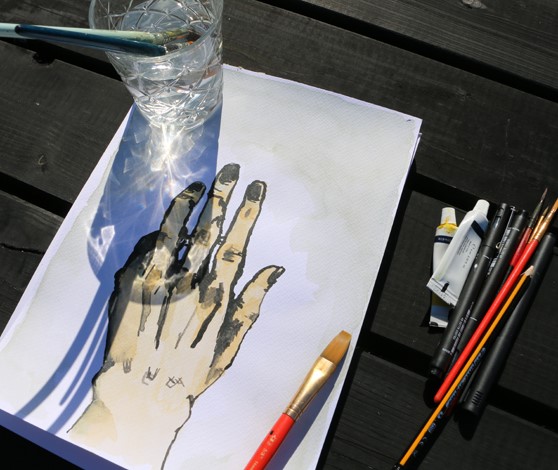New Interview from Larry Abbott: “The Visual Diary of Danish Soldier Henrik Andersen”
Art After War: The Visual Diary of Danish Soldier Henrik Andersen
As the memory of U.S. participation in the Afghanistan War fades in the minds of most Americans (the report on the exit fiasco notwithstanding), there was probably even less awareness that the military did not “go it alone” but had NATO allies, including Denmark (which entered the war 2001), one of the twelve founding nations in 1949. In Afghanistan the Danish military suffered 43 deaths from combat injuries, with 214 wounded in action. The raw number is low compared to the U.S. but was the highest number of deaths any country suffered if considered per capita, and so had an outsized impact.
That the Danish participation in the war still looms large in the country is reflected in an installation at The Danish War Museum in Copenhagen, which developed A Distant War – A Danish Soldier in Afghanistan over 10 years ago. It reflects an on-going presence of the war and its aftermath, a memory embodied in a physical space.
Mai Stenbjerg Jensen, the curator, told me that “the exhibition was made in collaboration with the Danish Armed Forces, more precisely with soldiers from ISAF team 10. Objects in the exhibition have all been brought home directly from Afghanistan. The exhibition shows the Danish soldier’s journey during a deployment to Afghanistan. The story is told from the soldiers’ perspective” (personal communication, July 4, 2023). The exhibit follows a ternary pattern of a soldier going to war, in country, and back home.
The return home to civilian life can be problematic, as soldiers of any country’s forces can be affected by PTSD. In the same way that the war for the American public is largely forgotten, the effects of war on the individual are likewise ignored or misunderstood by the broader civilian population. This can lead to a sense of dislocation and alienation. For many vets, the arts can offer a pathway to understanding their feelings of estrangement upon return by creating a visual or verbal representation of those feelings. Another intention of veterans’ artistic creation is to share their work with both the general public and with other vets. The artwork can provide the non-vet with a window into the veterans’ war and post-war experiences, helping to bridge the vet/non-vet divide, while sharing their work with other vets can both inspire and create a sense of community, thus reducing that sense of isolation and estrangement.
Henrik Andersen, now 40, served in the Danish army for 15 years and was deployed to Kabul, Afghanistan from February to August 2017. He had the rank of Specialist. When he returned home he was eventually diagnosed with PTSD. He decided that he would use artwork as a way of dealing with the various levels of how the diagnosis affected his daily life. Starting on January 1, 2022 and until December of that year he created a new watercolor each day. He notes in an artist’s statement: “Follow my painted diary for better or for worse with my daily companion PTSD. A new picture every day in 2022 that both describes my world in and around me.”
Photo courtesy of Mads Ullerup
Andersen told me that “the diary concept was one my wife came up with, and for me a way to express myself daily through both good and bad days with a troubled PTSD mind, the thoughts, the emotions and sense of things which made an impact that particular day. I usually made the picture at the end of the day to make sure I got the most important impact of the day down on paper. It’s sometimes really hard to go to a mentally neutral place when you’re filled with anger, depression and loneliness. To empty your mind of judgmental thoughts and emotions and find that one thing that mattered just that day, that in itself can become therapeutic.”
He continued: “It would be really nice for me to be able to reach as many veterans as possible with my art. I hope that it will make a difference and maybe even inspire others and others like me, who are battling with the aftermath of their deployment, to inspire others to find new ways to express their daily struggle. Even though I have my Instagram account, I’ve still not reached out to as many as I would like to. I do think it is an important message to get out to veterans and their families, that there are other ways to express yourself than you might think. My artwork is very personal to me, and it was a big deal for me to go public with it. It is meant as a daily diary in pictures and every day a new picture in 2022. My wife convinced me to make it public through Instagram, so I would post a new picture, describing my day emotionally or physically.”
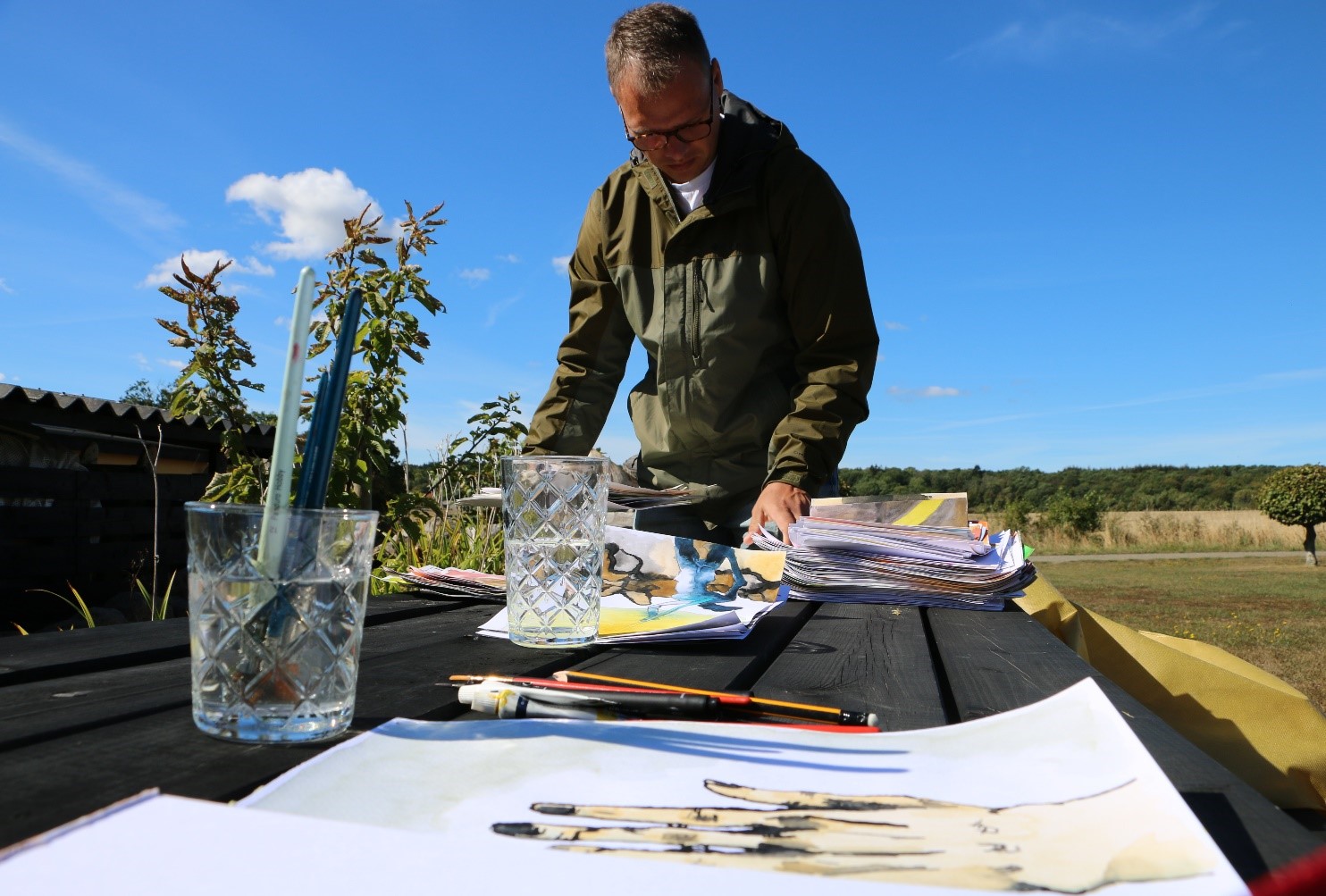 Photo courtesy of Mads Ullerup
Photo courtesy of Mads Ullerup
Andersen is not a formally-trained artist. He was adept at drawing and painting from childhood and was influenced by an eclectic mix of comics, the figures in Warhammer, movies, and the classical sculptures and paintings in museums. Regardless of the medium or the genre he was always interested in how a thought, a question, or an emotion could be expressed. To him, the work begins with an idea and then the manner of expression evolves from the initial idea. The finished product, he says “comes from trial and error, both so rewarding and frustrating.”
He does not plan any of his daily images but rather allows spontaneous moments to guide his work. The images are diverse, ranging from the relatively realistic to surrealistic to expressionistic. Even though they are created to reflect what Petersen is experiencing on any particular day they are not merely solipsistic and self-referential; they become a visual correlative that take on a broader meaning. The titles to the works help in this regard.
Photo courtesy of Mads Ullerup
The early pictures set the tone for much of the rest of the year. “Angsten og Vreden del. 1/The Anxiety and the Anger part. 1” is dated January 2, 2022, and depicts a fragment of a face in profile, just a nose and a wide-open mouth in a scream, with a ball of reddish-colored smoke emanating from the mouth.
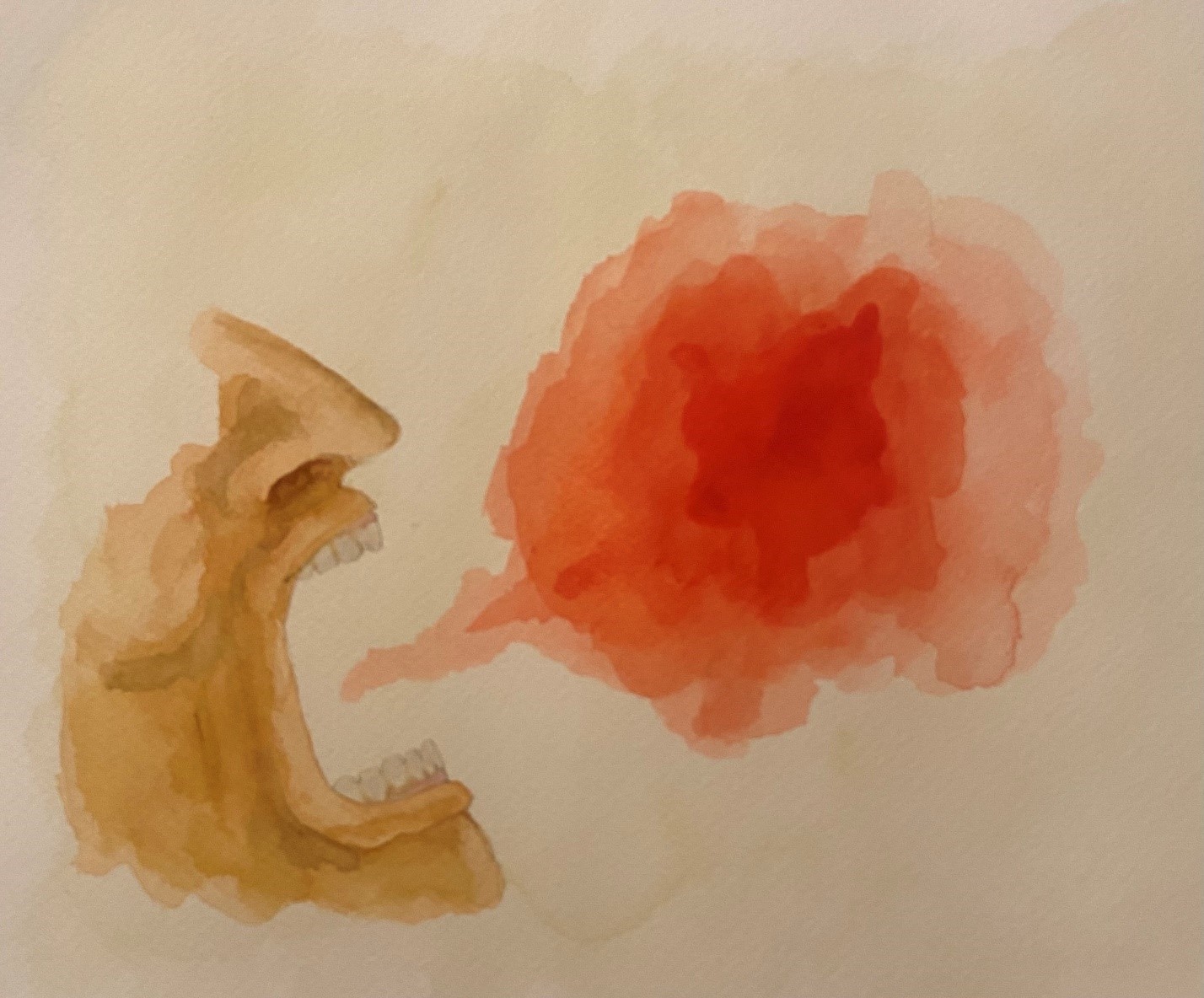
“Selvvalgt ensomhed/Self-selected Loneliness” (January 3) depicts an empty chair in a barren room; a day later, “Fjernsynet viser ingenting/TV is Showing Nothing,” a TV set in a bare gray room has a blank green screen, connoting that there is nothing worthwhile being presented. Each depicts a sense of emptiness and the inability of some vets to re-integrate into the broader civilian society. “Mareridt i rodt, derefter sort/ Nightmare in Red, Then Black,” completed a few days later, shows a bleak, war-torn landscape with a few burned trees in red, mirroring a burned-out psychological landscape.
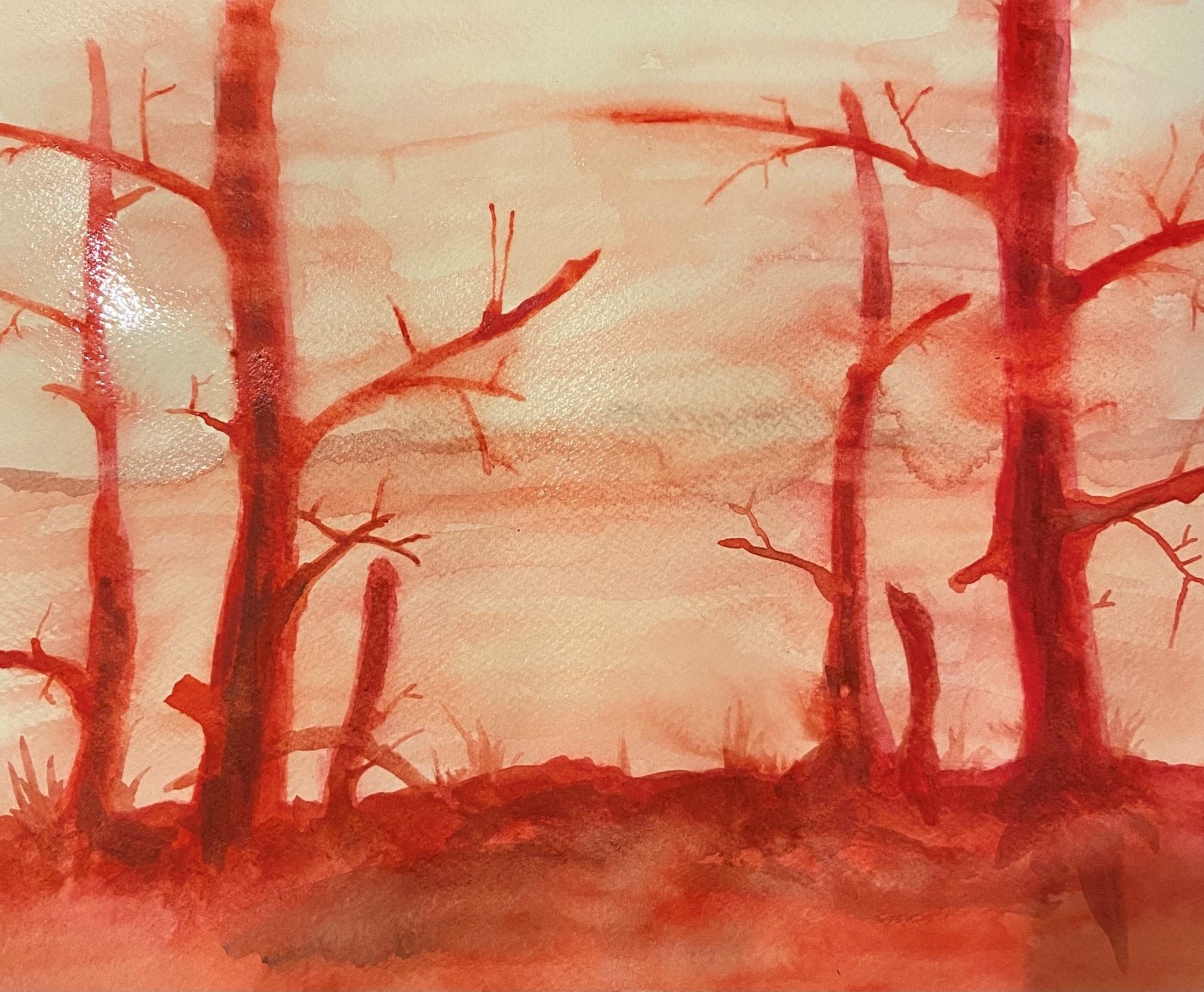
The January 5 work “Stenen i maven, mørk og varm/ Stone in the abdomen, dark and hot” refers to the physical impact of PTSD, and suggests that PTSD affects the vet not just psychologically but also physically.
As the year progresses the imagery takes on different dimensions. A few works show recognizable scenes, like the river and bridge of “Ude for at se verden/ Out To See The World” (February 21), a floodlight on a lone power pole (“Sidst i rækken/Last in line,” March 6), steps going down a tunnel (“Sidst i rækken/ What happens if you look inside,” April 15), a dilapidated house with collapsed roof (“Ja der er brug for genopbygning/ Yes rebuilding is needed,” October 11), and an isolated cabin (“Hyggeligt uhyggeligt/Cozy Cozy,” October 14). Interestingly, none of these scenes include people, and even in “Cozy Cozy” there is a sense of isolation and remoteness, while in “What happens if you look inside” there is an intimation of foreboding as the steps lead to emptiness.
Faces, especially the eyes, and stylized bodies figure in a number of works, a few of which are self-portraits. “Sidder her bare del. 1, 2, 3/Just sitting here sharing 1, 2, 3” (August 26, 28, 29), is a triptych of sorts. The first two panels depict a skeletal figure sitting on a rock leaning its skull on its right “hand.” In 1, the background is a washed-out gray. The same figure is in panel 2, but some color has been added. In the third panel the figure is in the same posture but is now fleshed out in green. There are three human figures in the October 21 “Bare en fornemmelse/Just a Feeling.” The figures, in foreground, midground, and background, are dressed in brown and wear neckties, but are faceless. The two closest figures have flames around their feet, while the figure in the background is engulfed in flames. The figures appear impassive, accepting pain and death. “Sådan føler jeg mig/This is how i feel” (October 30) is a self-portrait. The figure is fleshed, not skeletal, yet the posture is reminiscent of the skeletons in “Just sitting here sharing 1 and 2.” The eyes are wide and the face anguished, suggesting the pain caused by PTSD. Although the title “Trivialiteten er skræmmende/Triviality is scary” (February 8) might be considered a bit strange, it points toward the inability to fully reintegrate into the daily minutiae of civilian life. In this self-portrait, the predominant feature in the multicolored, somewhat blurred face are the eyes. Similar to other works, the eyes are wide, staring, fearful. In the July 23 “Selvportræt/Self-portrait” the face is disembodied, outlined in gray and framed by red, and seems to be floating in the clouds over mountains, leading to a sense of disconnection and alienation from the world.
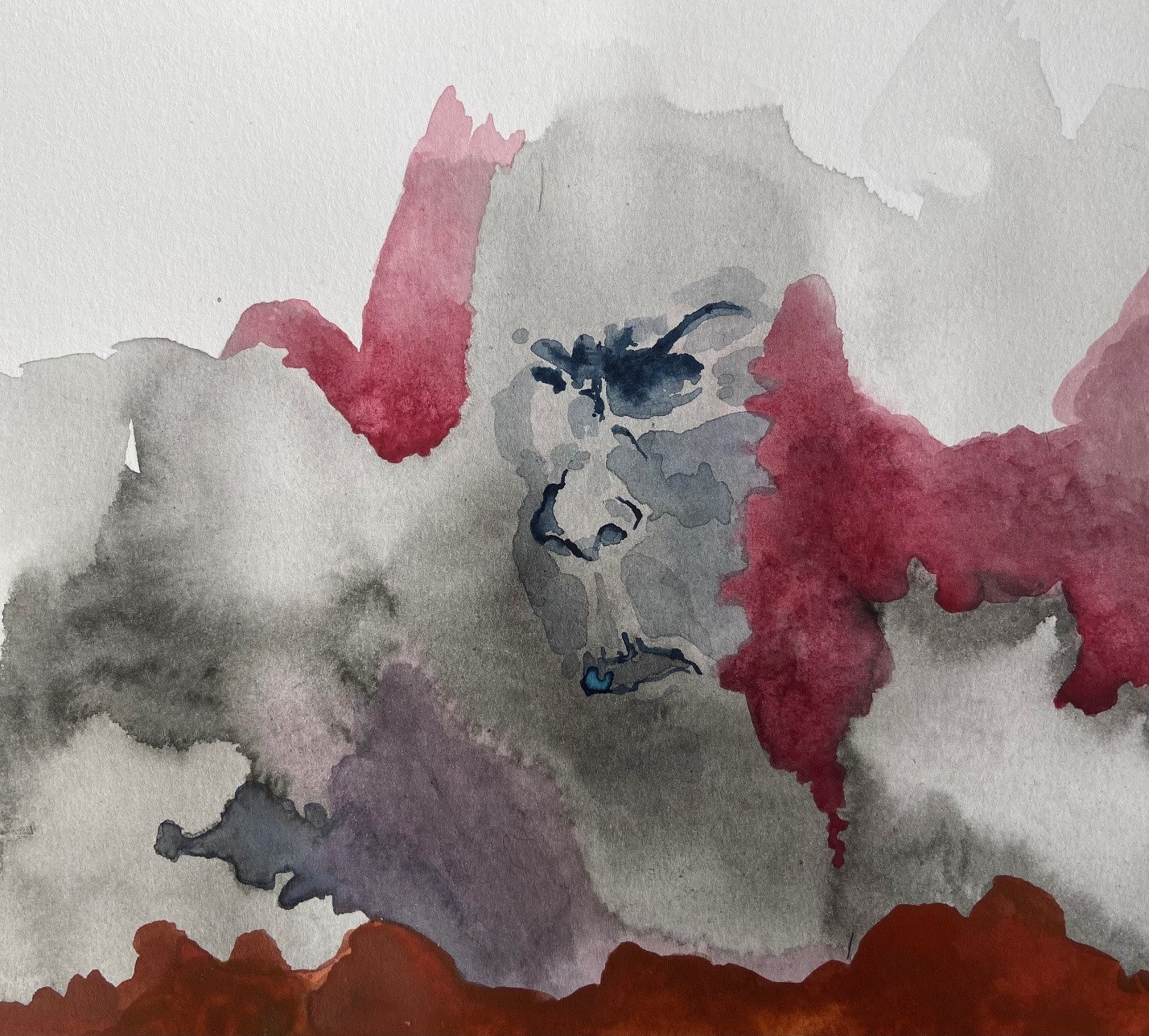
There is also a self-portrait entitled “Tabt forbindelse/Lost Connection” from October 11. There is a disembodied head attached to tendrils with a green object next to the cheek. Both of these works connote a sense of loss, even a dissociation from one’s own body.
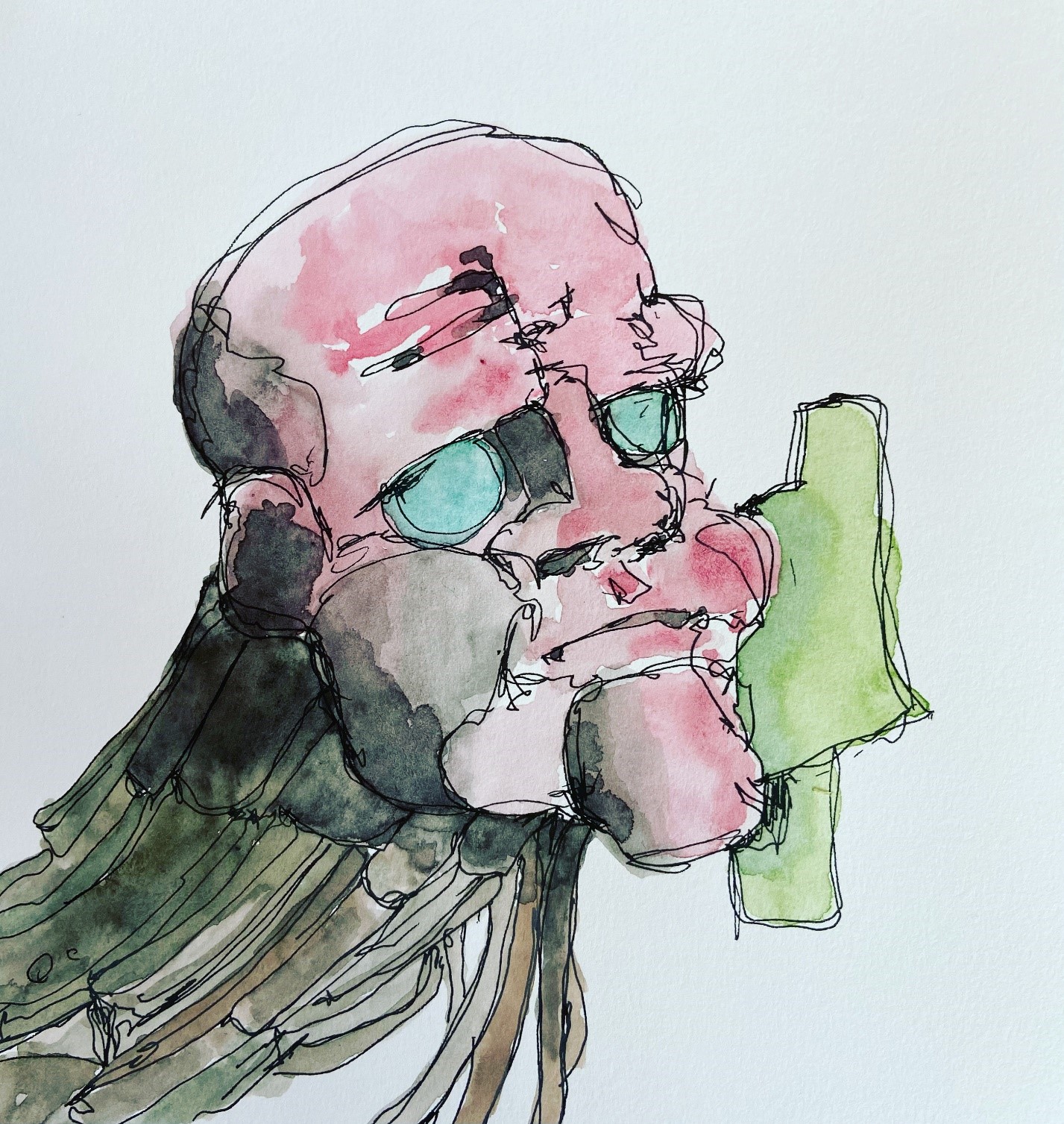
Much of the work has an abstract quality. “Drukner på land/Drowning on land” (November 10) depicts shapes of blue and brown, yet the title reveals a sense of struggle and suffocation. The November 2 “Tankespin/Mind spin” is a burst of reds, and represents both the explosions of war on the battlefield and in the mind. “Hvor brænder det ?//Where does it burn?” (August 20-22) is another series in three parts. In each piece, stylized and intermixed dark and lighter blue smoke rises from what could be hills. Looking closely at the first panel one sees what could be disembodied eyes in the smoke. In part 2 the eyes become a bit more pronounced. In part 3 an outline of a face in dark red, with what appears to be bared fang-like teeth, is revealed in the smoke. There is an agonized expression on the face. Again, the burning can refer to the destruction of war and also to a mind on fire.
Not all the watercolors represent negative emotions. The March 8, “Et sælsomt lille væsen er mødt op/A happy little creature has appeared” shows a rabbit in a field. In “Foråret kommer nu/Spring is coming” from March 9 a sprig of green grows out of a finger on a green hand, showing the regenerative power of Nature. There is the playful “Guleroden er der, jeg kan se den nu/ The carrot is there, I can see it now” (April 4); a teddy bear is the subject of the October 18 “Ren kærlighed/Pure love”; likewise, a bird is the subject of “Maskot/Mascot” (November 10). These more “gentle” works indicate that even with the traumatic aftereffects of war there is the possibility for beauty and clarity.
As he looks back on his visual diary he told me “this picture [the April 1 “Hænderne, der skaber og ødelægger/The Hands that Create and Destroy”] and others like it, of a withered, sick hand, gives a new meaning after I tried to take my own life in February 2023, and the attempt left me with exactly that, and really makes me think about the dual meaning in a lot of my pictures. I’ll admit that I didn’t succeed every day, but it was just as important to some days paint through a veil of tears or immense anger. I haven’t continued in 2023 with the diary but I am still painting, it is my little safe zone through the day and it has a calming effect to put paint on paper, the colors and the brush don’t expect anything from me, and as long as I don’t try to force something on to the paper it’s very fulfilling and stressless. My pictures surprise me in ways I would never have imagined.”
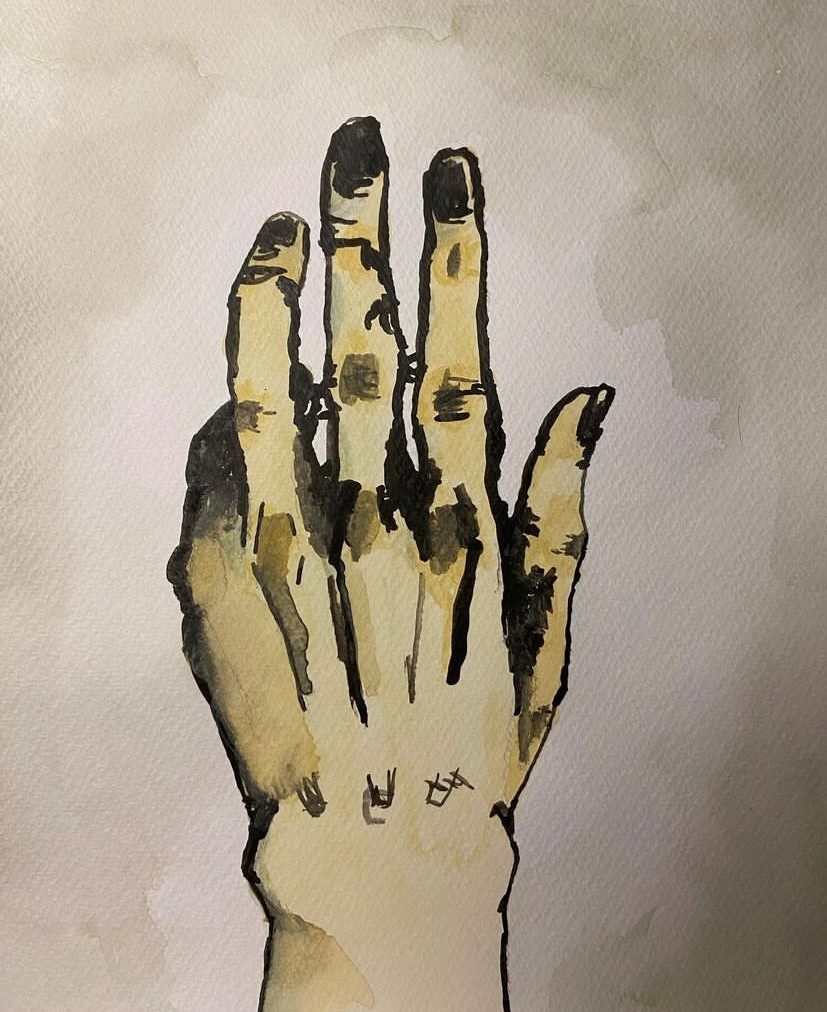
The range of Andersen’s images offers a broad insight into the post-war experience, including the effects of PTSD. His images reveal the uncertainty and tenuousness of what any particular day will bring. At the same time, the very act of creation becomes a shield or bulwark against this uncertainty and provides a sense of order, not only in the finished product but also in the process itself, which provides a structure that my otherwise be lacking.
All statements by Mr. Andersen were from correspondence with him on October 7, 10 and 11, 2023.
All artwork images courtesy of Henrik Andersen.
All photographs of Andersen courtesy of Mads Ullerup.
Images available on Instagram: henrikerladetmedptsd
References:
Danish casualties: https://politiken.dk/udland/art4788077/Danmark-mister-flest-soldater-i-Afghanistan
A Distant War: https://en.natmus.dk/museums-and-palaces/danish-war-museum/exhibitions/a-distant-war/
Mads Ullerup, “With Paintbrush and PTSD,” October 22, 2022, https://www.veterancentret.dk/da/nyheder/2022/med-pensel-og-ptsd/
The Oscar-nominated Danish film Krigen (A War; 2015, directed by Tobias Lindholm), with echoes of “Breaker Morant,” examines the moral quandaries that war occasions and reveals that these dilemmas occur regardless of the size of a nation’s forces. https://www.nytimes.com/2016/02/05/movies/tobias-lindholm-narrates-a-scene-from-a-war.html


